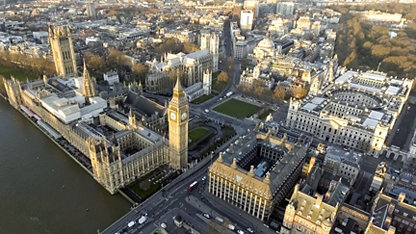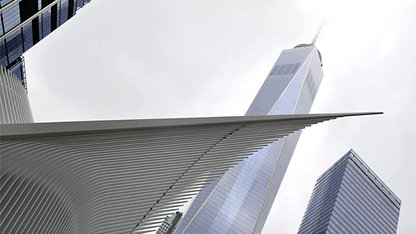International construction activity picked-up in the last quarter of 2019, according to the latest findings of RICS’ series of international Infrastructure and Construction Surveys. However, rising costs remain a drag on the sector, and the impact of the Coronavirus could hamper short-term output.
Across all regions surveyed by RICS, infrastructure and construction professionals reported a trend of increased workloads in Q4 2019, but the overall picture varies considerably within these global regions.
Sub-Saharan Africa boasts strong growth but geopolitics hold back Middle East
Three quarters of countries surveyed in the Middle East and Africa saw workloads increase in net balance terms. The picture was most positive among Sub-Saharan African countries; Mauritius, Nigeria and Uganda saw workloads increase the fastest in the quarter. South African respondents saw little change, with regulations and corruption cited as key barriers. Countries in the Middle East saw slower growth, with respondents in Kuwait and the UAE noting a moderate pullback in construction activity. Saudi Arabia stood out, with the Vision 2030 plan seemingly offsetting the impact of softer oil prices. Respondents within Gulf Co-operation Council countries highlighted the dampening effect of geopolitical tensions in the region, restricting the flow of capital, workers and materials.
North America sees upbeat picture emerge despite skills shortage
In the US, an increase in output was evident across the board, with both private commercial and public works construction particularly strong. Canada also saw a more upbeat picture, despite labour shortages holding back market activity. Indeed, more than 60% of respondents noted a shortage of skilled labour. This trend was mirrored in the US, where a majority highlighted a lack of both labour and a shortage of skills.
Key takeaways:
- Workload activity improved across global regions in Q4 2019
- Coronavirus to constrain activity in Asia Pacific in Q1, with potential impact on supply chains
- Costs rising faster than tender prices likely to increase financial strain for private firms
Australia and New Zealand outperform as idiosyncratic factors take hold
The Asia Pacific region also saw modest growth in the typical workload within the sector, but performance was far from uniform. Australia and New Zealand reported the strongest pick-up in construction activity. In Malaysia, China and Sri Lanka conditions appear to be more sluggish. Hong Kong saw activity contract at the end of 2019, with civil unrest seemingly causing some projects to be placed on hold.
The UK followed the wider international trend of improving activity. In the final quarter of 2019, a net balance of 12% of respondents reported workloads had risen, with infrastructure activity a key driver. However, uncertainty over the next stages of Brexit is still holding back investment in the sector.
Coronavirus likely to weigh on Q1 APAC activity
Despite a solid end to the year from the construction and infrastructure sector globally, the Coronavirus is likely to weigh on activity. Given the lockdown on the mainland, it is likely that activity in China and Hong Kong will contract in Q1 of 2020. Singapore may also experience a pullback in activity.
Further afield, we may see a less direct impact, if containment efforts put in place by the Chinese government restrict the supply of construction materials to other markets, pushing up costs.
“The final quarter of 2019 saw a moderate improvement in the fortunes of the construction and infrastructure sector across global markets, but the picture was certainly fragmented. Country-specific challenges remain, as does the pressure brought by costs rising more rapidly than tender prices. ”
Costs to rise more rapidly than tender prices across global markets
Financial pressures are already a concern across international markets. In the UK, 71% of respondents reported financial constraints as the key impediment to construction activity, as did more than two-thirds of respondents in the Middle East. A similar proportion of respondents in Africa highlighted the cost of materials. Aside from Australia and Hong Kong, at least half of respondents in Asia Pacific reported that the cost of materials was a drag on activity.
RICS’ latest Consensus Tender Price and Construction Costs suggests pressure on margins may intensify in 2020, with costs rising faster than prices – without factoring in the potential impact of the Coronavirus. In Asia Pacific, tender prices for building and civil engineering projects are forecast to rise 2.4% and 2.8% respectively; total construction costs are forecast to rise 3%. In the Middle East and Africa, building tender prices are predicted to rise 2.4%, with construction costs rising by 3.2%. In North America construction costs are expected to rise 4.6%, outstripping rising tender prices.
Sean Ellison, Senior Economist, RICS, commented: “The final quarter of 2019 saw a moderate improvement in the fortunes of the construction and infrastructure sector across global markets, but the picture was certainly fragmented. Country-specific challenges remain, as does the pressure brought by costs rising more rapidly than tender prices.
“The Coronavirus brings with it a degree of uncertainty for the construction and infrastructure market, given the direct impact it will have on output in the Asia Pacific region. Time will tell how widely other global regions are affected, but its impact could be fairly short-lived if the virus is contained swiftly.”














